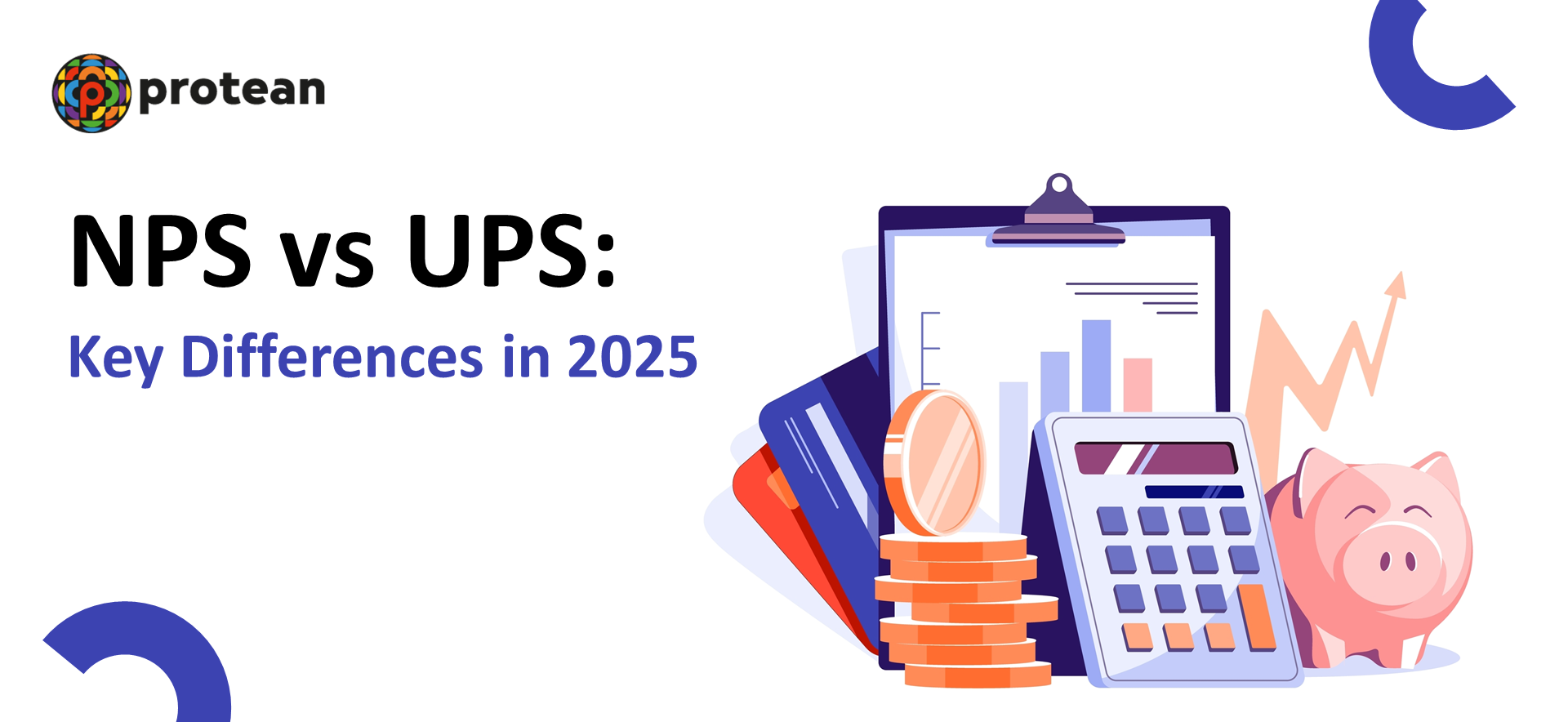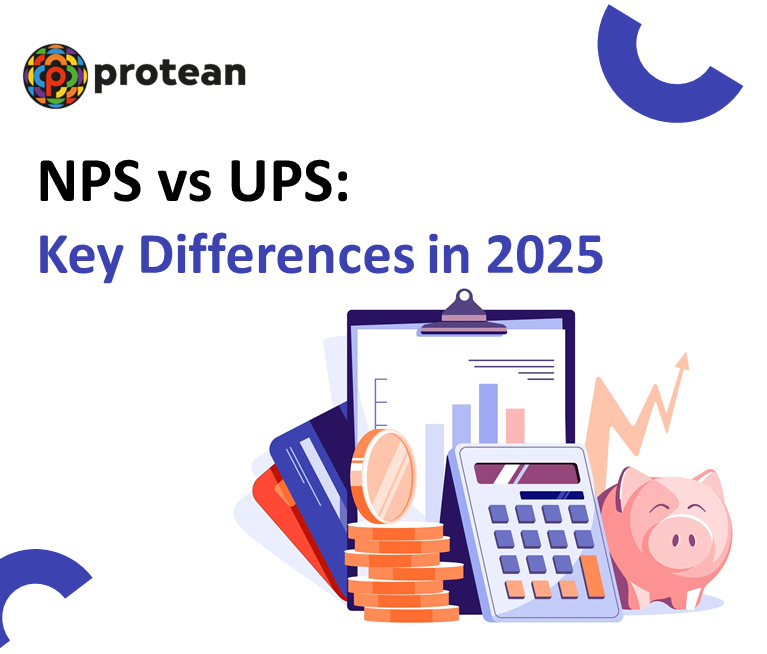Retirement planning is a crucial financial decision. Choosing the right scheme can significantly impact your future security. With evolving policies in 2025, the battle of NPS vs UPS has become more intense. Each scheme comes with unique features. But which one truly offers the best benefits for you? Let’s dive deep into these two schemes to help you make an informed decision about your golden years.
Understanding NPS
In 2004, the National Pension System (NPS) replaced OPS for government employees. It was extended in 2009 to cover private-sector employees, self-employed individuals, and NRIs. Unlike OPS, NPS is a market-linked pension scheme where an individual’s retirement corpus depends on investment performance.
Employees contribute regularly, and upon retirement at 60, 40% of the accumulated corpus can be used for an annuity, and 60% can be withdrawn without the burden of taxation. There is no assured pension amount, as payouts depend on investment performance.
| Also Read: NPS Calculator for Retirement |
NPS Eligibility Criteria
- Open to government and private-sector employees
- Available for NRIs and self-employed individuals
- Requires mandatory contributions during service
Pros of NPS
- Higher returns due to market-linked investments
- Partial lump sum withdrawal (60%) allowed at retirement
- NPS deduction under Sections 80C, 80CCD (1B), and 80CCD (2)
- Flexibility to choose fund managers and investment options
Cons of NPS
- Pension is not guaranteed, as it depends on market performance
- 40% of the corpus must be annuitised, reducing immediate liquidity
Understanding UPS
As you already know, the NPS full-form now, it’s time to learn what UPS stands for. Introduced in 2024, the Unified Pension Scheme (UPS) aims to provide a guaranteed pension but with a contribution model like NPS. It is currently available to all central government employees and may extend to state government employees.
Employees covered under NPS can switch to UPS, ensuring broader pension coverage. The scheme guarantees a pension amount of 50% of the average basic salary over the last 12 months before retirement for those with at least 25 years of service. Additionally, employees with a minimum of 10 years of service are entitled to a minimum pension of ₹10,000 per month upon superannuation.
In case of the pensioner’s death, their family will receive 60% of the last pension drawn. Employees contribute 10% of their basic salary and DA, while the government contributes 8.5%—a higher share than NPS’s 14%.
UPS Eligibility Criteria
- Available to all central government employees (may extend to state employees)
- Employees covered under NPS can switch to UPS
- Requires 10% employee contribution of basic pay + DA
Pros of UPS
- Guaranteed pension amount based on last 12 months’ salary
- Higher government contribution (8.5%) compared to NPS (14%)
- Family pension provision ensures financial security for dependents
- Inflation-linked adjustments protect purchasing power
- Gratuity benefits included
Cons of UPS
- No lump sum payout at retirement
- Taxation details unclear at this stage
- It may not provide financial flexibility compared to NPS
NPS vs UPS: Decoding the Key Differences
| Feature | National Pension System (NPS) | Unified Pension Scheme (UPS) |
| Type | Market-linked Investment Scheme | Hybrid Pension Scheme (Guaranteed pension with contribution model) |
| Applicable To | Government and private-sector employees, NRIs, self-employed individuals | Central government employees (may extend to state employees) |
| Employee Contribution | 10% of basic salary + Dearness Allowance (DA) | 10% of basic salary + Dearness Allowance (DA) |
| Government Contribution | 14% of basic salary + Dearness Allowance (DA) | 8.5% of basic salary + Dearness Allowance (DA) |
| Pension Calculation | Depends on investment performance and annuity plan | 50% of average basic pay over the last 12 months (for employees with 25+ years of service) |
| Lump Sum Payout at Retirement | 60% of corpus (tax-free), 40% annuitised | No |
| Family Pension | Depends on the annuity plan chosen | 60% of the last pension drawn given to family |
| Inflation Protection (DA Revisions) | No guaranteed DA revision | Yes, inflation-linked adjustments |
| Tax Benefits | Tax deductions under Sections 80C, 80CCD (1B), and 80CCD (2) | Taxation details are yet to be clarified |
| Risk Factor | Market-dependent returns, no guaranteed pension | No market risk, assured pension |
| Gratuity Benefits | Yes | Yes |
| Flexibility in Investment | Choice of fund managers and investment options | Not applicable |
| Sustainability | Sustainable, self-funded through investments | Balanced approach with government support |
| Also Read: Retirement NPS Details |
NPS vs UPS: Which One is the Best for You?
Choosing the right pension scheme depends on various factors, including job stability, risk tolerance, and retirement expectations. Here’s a comparative analysis to help you decide:
1. If You Want Flexibility and Market-Linked Growth:
Best Option: NPS
- Allows individuals to choose their investment options and fund managers.
- Offers tax benefits under Sections 80C, 80CCD (1B), and 80CCD (2).
- Suitable for private-sector employees, NRIs, and self-employed individuals.
- However, returns are not guaranteed as they depend on market performance.
2. If You Want an Assured Pension with Government Support:
Best Option: UPS
- Provides a guaranteed pension amount of 50% of the last 12 months' average salary (for employees with 25+ years of service).
- Ensures an assured family pension and minimum pension.
- Government contribution is higher (8.5%) than in NPS.
- Ideal for government employees looking for a balance between assured benefits and sustainable funding.
- However, the details of the taxation and long-term sustainability remain under review.
Final Verdict
- NPS suits individuals who are comfortable with investment risks and want tax advantages.
- UPS appears to be a middle ground, providing government-backed financial security while ensuring sustainability.
For government employees hired after 2004, UPS might be a better alternative to NPS due to its assured pension benefits. However, private-sector employees and self-employed individuals will still find NPS the only viable option. Ultimately, the best plan depends on your employment type, financial goals, and risk preference.
| Also Read: NPS Withdrawal Guide |
Conclusion
Selecting the right pension scheme—NPS and UPS—depends on your financial goals, job security, employer status and risk appetite. NPS provides flexibility and market-linked returns, making it suitable for private-sector employees and self-employed individuals. UPS, the latest scheme, strikes a balance by offering guaranteed pensions. As pension policies evolve, it's essential to stay informed about updates and choose the plan that aligns best with your future security needs.
Frequently Asked Questions
1. Which is better NPS, or UPS?
NPS is suitable for private-sector employees and those preferring investment-linked growth, though it lacks assured returns. UPS balances both, offering a fixed pension with mandatory contributions and making it a structured alternative to NPS.
2. What will happen to NPS after UPS?
UPS is expected to replace NPS for government employees, providing an assured pension model instead of market-dependent returns. Employees under NPS may be able to switch, but details on fund transfers and taxation are yet to be clarified. The transition will impact retirement planning, making it essential to stay updated on policy changes.
3. What is the new pension scheme for 2025?
The Unified Pension Scheme (UPS) is designed to replace NPS for government employees. It offers a defined pension structure and ensures a minimum pension of ₹10,000 per month, with government contributions set at 8.5%. Unlike NPS, UPS provides guaranteed benefits but may lack lump sum withdrawal options upon retirement.
4. How much pension is available from NPS?
The pension amount in NPS is not fixed, as it depends on the total accumulated corpus and annuity plan chosen at retirement. Upon retirement, 60% of the corpus can be withdrawn tax-free, while the remaining 40% must be invested in an annuity to receive a monthly pension. The exact pension amount varies based on market returns, annuity rates, and individual contributions.
5. Is UPS only for government employees?
In 2024, the Union Cabinet approved the Union Pension Scheme (UPS) to provide a minimum assured pension to central government employees. UPS has been introduced as an optional component within the National Pension System (NPS). It will be available to central government employees already enrolled in NPS and opting for the scheme.
Written by Bruhadeeswaran R.
Bruhadeeswaran R. is a B2B content expert with 14+ years of experience, specializing in National Pension System (NPS), PAN, DPI, eSignPro, and Central KYC. As Editor and Lead Content Writer at Protean eGov Technologies, he simplifies complex e-governance topics through engaging blogs, reports, and digital content.

